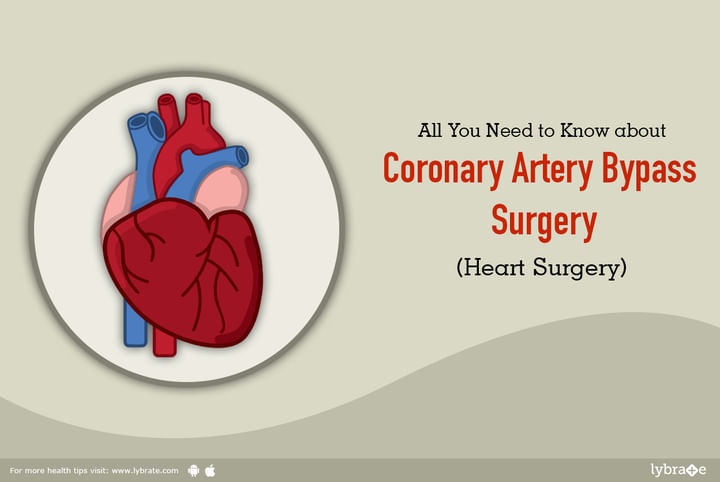All You Need To Know About Coronary Artery Bypass Surgery (Heart Surgery)
Coronary artery bypass surgery is a surgical procedure wherein blocked coronary artery or arteries (blood vessels that supply blood to the heart) are bypassed with blood vessels taken from the legs, arms or chest area. The procedure is performed to re-establish normal blood flow to the heart and is mainly used to treat coronary heart disease or coronary artery disease (CAD).
A person suffering from coronary heart disease receives less supply of oxygen to the heart as his coronary arteries get blocked by fatty material. This accumulation of fat within the walls of the arteries causes these blood vessels to become narrow, leading to problems like chest pain, abnormal heart rhythms, and shortness of breath, among other things.
Where do these bypassing Blood Vessels come from?
Depending on the extent and location of the blockage as well as size of your coronary arteries, different types of grafts (blood vessels) may be used for the procedure. The grafts that are employed during the procedure are the following:
Internal mammary arteries: These arteries are the most common grafts used for the procedure. They are located in the chest area and are kept in their place of origin so as to not disrupt the flow of oxygen through these blood vessels. They are known to provide the best long-term outcomes and better rate of survival compared to others.
Saphenous veins: These blood vessels are taken from the leg area and are attached from the aorta to the coronary artery, below the place of blockage. Generally, these veins are inserted using minimally invasive procedures to prevent scarring and to ensure quicker recovery.
Radial artery: Situated in the lower part of the arm, radial arteries are removed for use as grafts. But this graft option is not prescribed for people suffering from conditions like Raynaud's disease (a rare disorder characterized by the numbness of the fingers and toes in times of stress or cold temperatures), painful fingers during winters or carpal tunnel syndrome (a medical condition of the hand and fingers brought on by the compression of the median nerve travelling through the carpal tunnel of the wrist).
The different procedures for Heart Surgery:
Open heart procedure is the most preferred surgical option for bypassing blocked coronary arteries. During this procedure, the heart is stopped for some time and is put on a heart-lung machine so as to enable the surgeon to perform the necessary bypass. Beating heart bypass surgery or off-pump procedures, wherein the surgeon carries out the surgery without stopping the heart is also increasingly being used.
Apart from these traditional procedures, minimally-invasive procedures like robotic procedures (a surgery in which a mechanical device is used) or key-hole surgery (surgery that sees very small incisions being made) are also performed to restore blood flow to the heart. These procedures are becoming increasingly popular as they provide a shorter recovery time and hospital stay alongside less scarring issues.



+1.svg)
